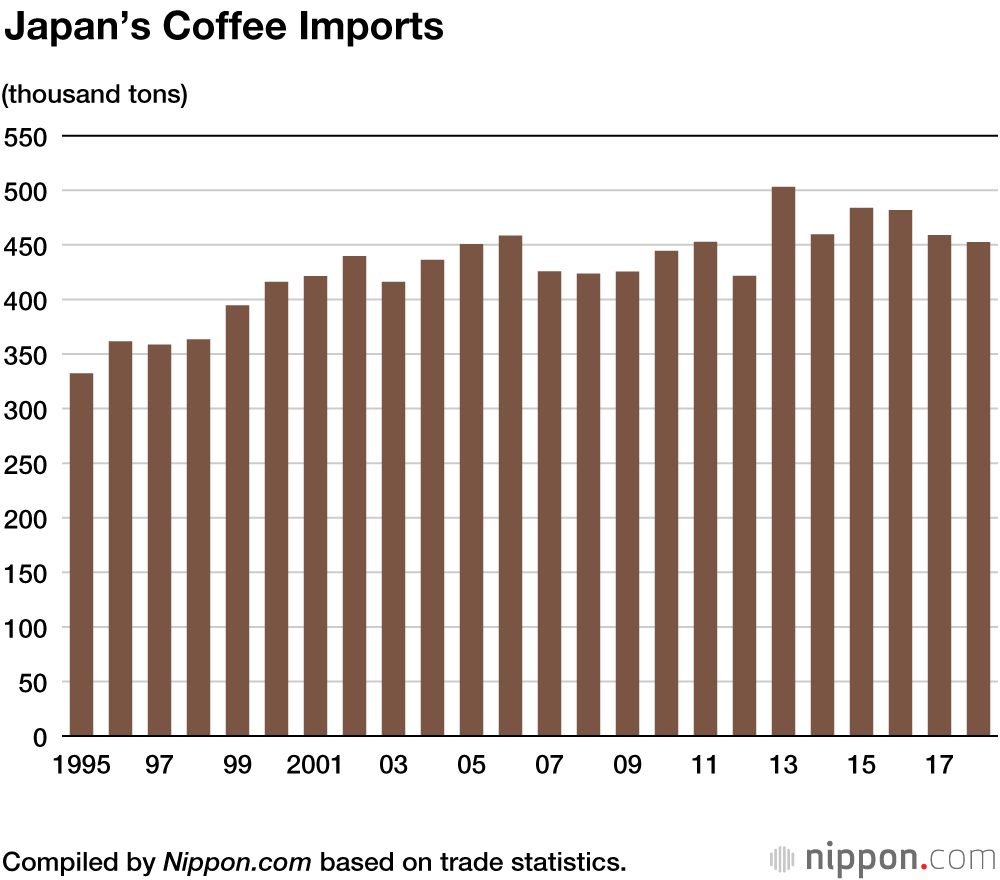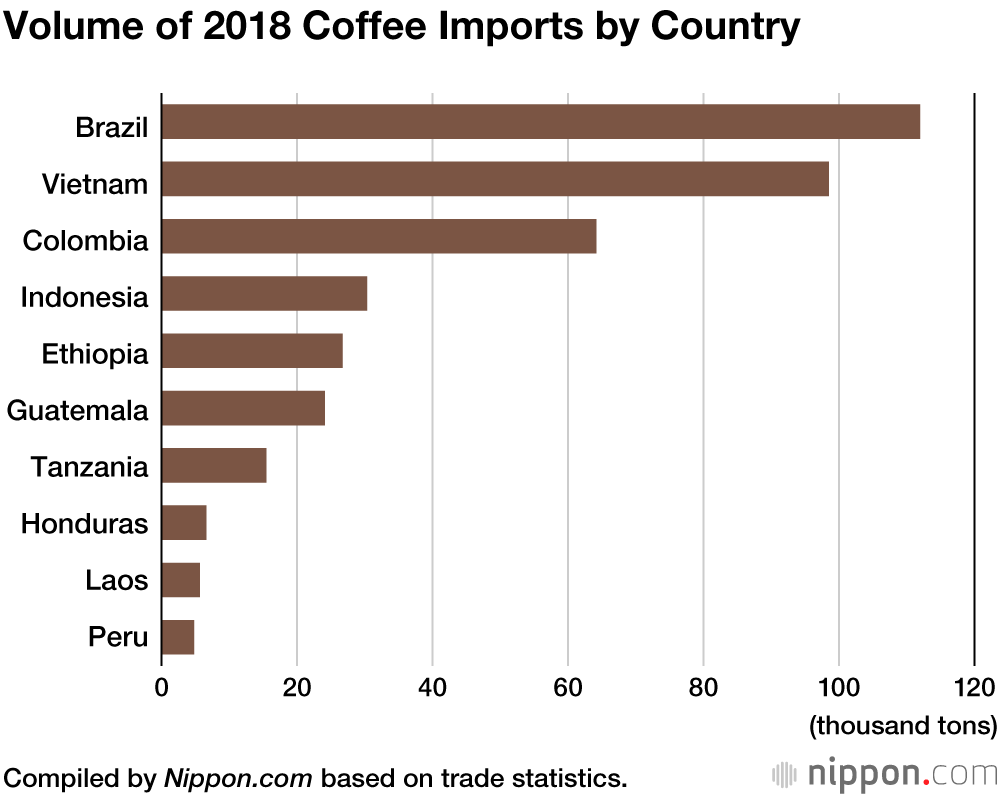
Imports of Vietnamese Coffee Cutting into Brazil’s Top Market Share in Japan
Economy Lifestyle- English
- 日本語
- 简体字
- 繁體字
- Français
- Español
- العربية
- Русский
Taking a break with a cup of coffee to recharge or have a chat with friends has become an essential part of Japanese people’s lives. But nearly all the coffee consumed in Japan is imported. Since around 2000, annual coffee imports have remained steady at around 400,000 to 500,000 tons, and they totaled 452,000 tons in 2018.
By country, Brazil was the main source of coffee for Japan in 2018, at 112,000 tons, followed by 98,000 tons from Vietnam. Those two countries alone accounted for nearly half of all imports.
Brazil is the world’s leading producer of coffee, and its Arabica beans grown in the highlands are known for their high quality and balance between acidity and bitterness. Meanwhile, in Vietnam, the main type of coffee grown is Robusta, which is more bitter than Arabica. Since Robusta is slightly lower in quality, while also easier to cultivate, it sells for around 30% less than Arabica. For this reason, Robusta is often used to make instant coffee.
In recent years the proportion of beans imported from Brazil has been on the decline, edged out by increasing imports of Vietnamese coffee. One reason for this is the growing demand for convenient single-serving “stick-type” instant coffee—against the backdrop of the increase in single-person households and people eating alone. In addition, in response to the price-consciousness of consumers, there is a growing number of less expensive regular coffee products on the market that blend in Robusta coffee with a base of Arabica.
(Translated from Japanese. Banner photo © Pixta.)


